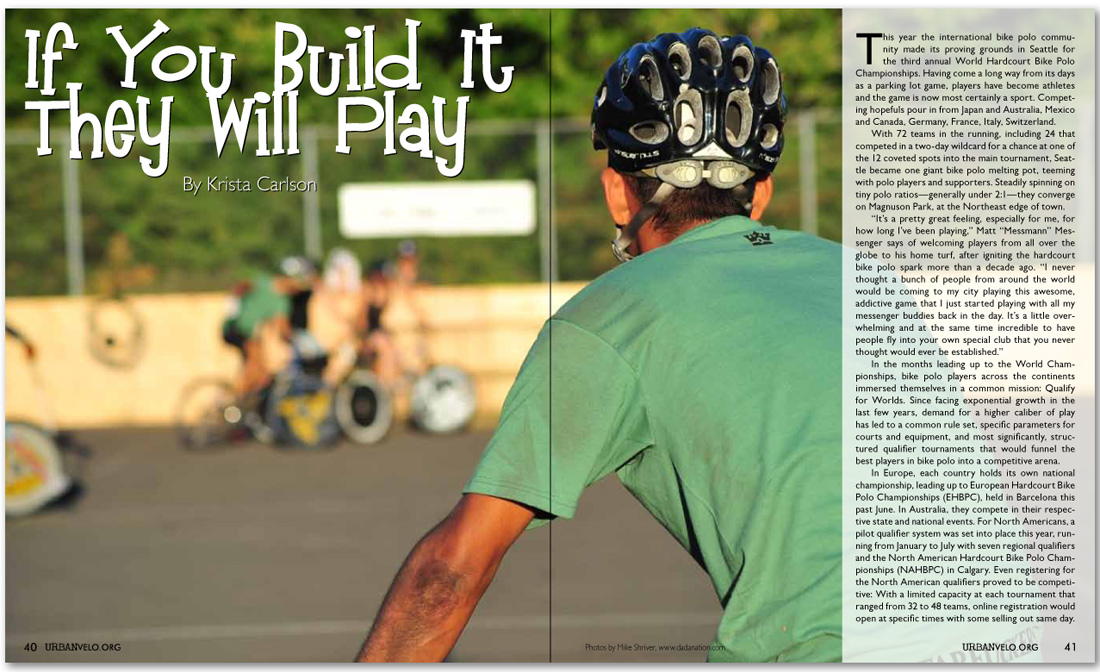


If You Build It, They Will Play
By Krista Carlson
Photos by Mike Shriver, www.dadanation.com
This year the international bike polo community made its proving grounds in Seattle for the third annual World Hardcourt Bike Polo Championships. Having come a long way from its days as a parking lot game, players have become athletes and the game is now most certainly a sport. Competing hopefuls pour in from Japan and Australia, Mexico and Canada, Germany, France, Italy, Switzerland.
With 72 teams in the running, including 24 that competed in a two-day wildcard for a chance at one of the 12 coveted spots into the main tournament, Seattle became one giant bike polo melting pot, teeming with polo players and supporters. Steadily spinning on tiny polo ratios—generally under 2:1—they converge on Magnuson Park, at the Northeast edge of town.
“It’s a pretty great feeling, especially for me, for how long I’ve been playing,” Matt “Messmann” Messenger says of welcoming players from all over the globe to his home turf, after igniting the hardcourt bike polo spark more than a decade ago. “I never thought a bunch of people from around the world would be coming to my city playing this awesome, addictive game that I just started playing with all my messenger buddies back in the day. It’s a little overwhelming and at the same time incredible to have people fly into your own special club that you never thought would ever be established.”
In the months leading up to the World Championships, bike polo players across the continents immersed themselves in a common mission: Qualify for Worlds. Since facing exponential growth in the last few years, demand for a higher caliber of play has led to a common rule set, specific parameters for courts and equipment, and most significantly, structured qualifier tournaments that would funnel the best players in bike polo into a competitive arena.
In Europe, each country holds its own national championship, leading up to European Hardcourt Bike Polo Championships (EHBPC), held in Barcelona this past June. In Australia, they compete in their respective state and national events. For North Americans, a pilot qualifier system was set into place this year, running from January to July with seven regional qualifiers and the North American Hardcourt Bike Polo Championships (NAHBPC) in Calgary. Even registering for the North American qualifiers proved to be competitive: With a limited capacity at each tournament that ranged from 32 to 48 teams, online registration would open at specific times with some selling out same day.